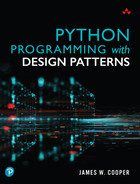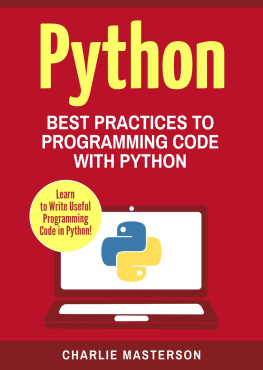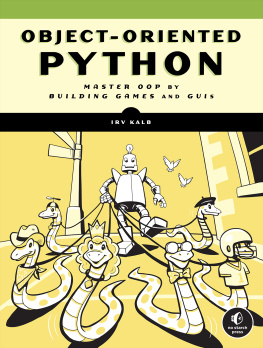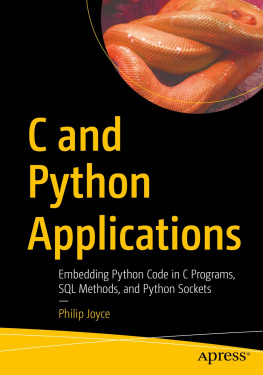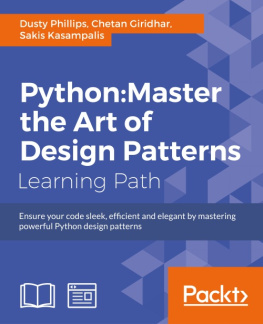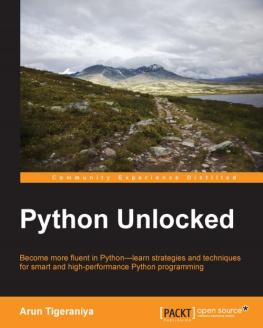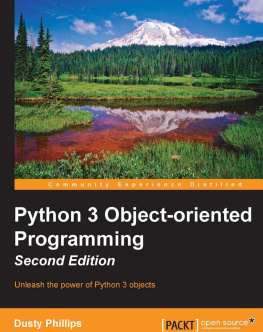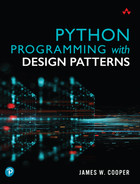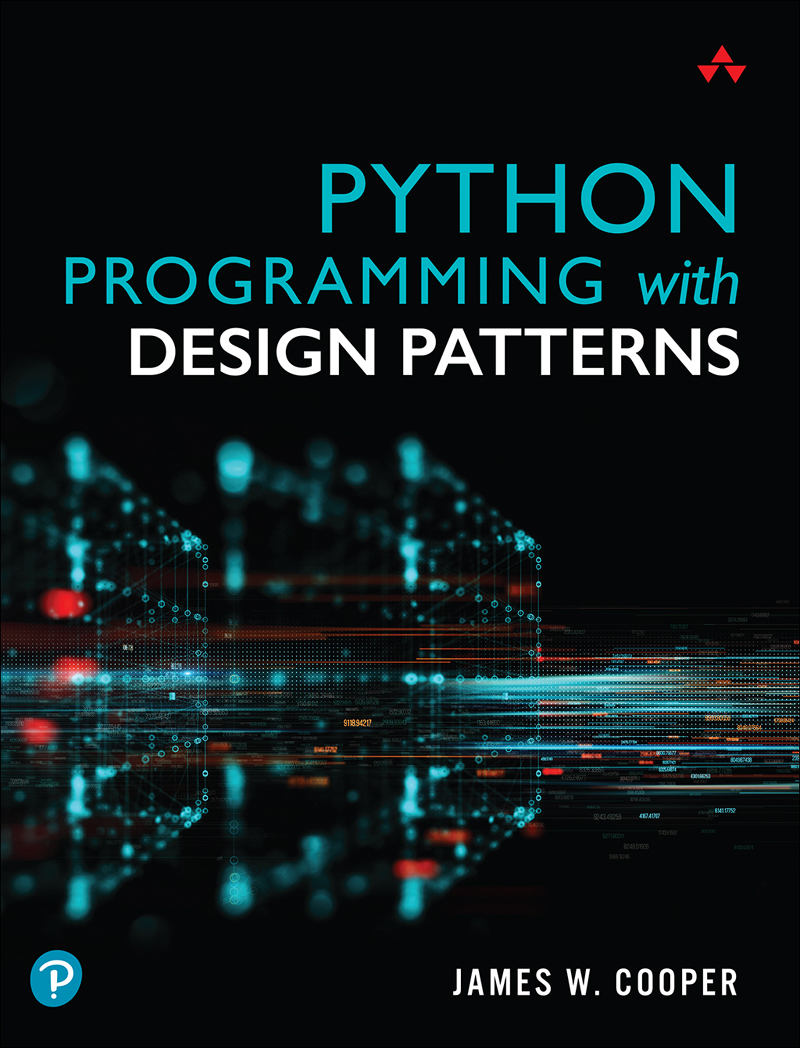ePUB is an open, industry-standard format for eBooks. However, support of ePUB and its many features varies across reading devices and applications. Use your device or app settings to customize the presentation to your liking. Settings that you can customize often include font, font size, single or double column, landscape or portrait mode, and figures that you can click or tap to enlarge. For additional information about the settings and features on your reading device or app, visit the device manufacturers Web site.
Many titles include programming code or configuration examples. To optimize the presentation of these elements, view the eBook in single-column, landscape mode and adjust the font size to the smallest setting. In addition to presenting code and configurations in the reflowable text format, we have included images of the code that mimic the presentation found in the print book; therefore, where the reflowable format may compromise the presentation of the code listing, you will see a Click here to view code image link. Click the link to view the print-fidelity code image. To return to the previous page viewed, click the Back button on your device or app.
Python Programming with Design Patterns
James W. Cooper

Boston Columbus New York San Francisco Amsterdam Cape Town
Dubai London Madrid Milan Munich Paris Montreal Toronto Delhi
Mexico City So Paulo Sydney Hong Kong Seoul Singapore Taipei Tokyo
Many of the designations used by manufacturers and sellers to distinguish their products are claimed as trademarks. Where those designations appear in this book, and the publisher was aware of a trademark claim, the designations have been printed with initial capital letters or in all capitals.
Python screenshots: 2001-2021, Python Software Foundation
Cover image: spainter_vfx/Shutterstock
Screenshot of MySQL Workbench 2021, Oracle Corporation
The author and publisher have taken care in the preparation of this book, but make no expressed or implied warranty of any kind and assume no responsibility for errors or omissions. No liability is assumed for incidental or consequential damages in connection with or arising out of the use of the information or programs contained herein.
For information about buying this title in bulk quantities, or for special sales opportunities (which may include electronic versions; custom cover designs; and content particular to your business, training goals, marketing focus, or branding interests), please contact our corporate sales department at or (800) 382-3419.
For government sales inquiries, please contact .
For questions about sales outside the U.S., please contact .
Visit us on the web: informit.com/aw
Library of Congress Control Number: 2021947622
Copyright 2022 Pearson Education, Inc.
All rights reserved. This publication is protected by copyright, and permission must be obtained from the publisher prior to any prohibited reproduction, storage in a retrieval system, or transmission in any form or by any means, electronic, mechanical, photocopying, recording, or likewise. For information regarding permissions, request forms and the appropriate contacts within the Pearson Education Global Rights & Permissions Department, please visit www.pearson.com/permissions.
ISBN-13: 978-0-13-757993-8
ISBN-10: 0-13-757993-4
ScoutAutomatedPrintCode
Editor-in-Chief Mark Taub
Executive Editor Debra J. Willimans
Development Editor Chris Zahn
Managing Editor Sandra Schroeder
Senior Project Editor Lori Lyons
Copy Editor Krista Hansing Editorial Services
Production Manager Remya Divakaran/Codemantra
Indexer Ken Johnson
Proofreader Charlotte Kughen
Compositor Codemantra
Pearsons Commitment to Diversity, Equity, and Inclusion
Pearson is dedicated to creating bias-free content that reflects the diversity of all learners. We embrace the many dimensions of diversity, including but not limited to race, ethnicity, gender, socioeconomic status, ability, age, sexual orientation, and religious or political beliefs.
Education is a powerful force for equity and change in our world. It has the potential to deliver opportunities that improve lives and enable economic mobility. As we work with authors to create content for every product and service, we acknowledge our responsibility to demonstrate inclusivity and incorporate diverse scholarship so that everyone can achieve their potential through learning. As the worlds leading learning company, we have a duty to help drive change and live up to our purpose to help more people create a better life for themselves and to create a better world.
Our ambition is to purposefully contribute to a world where:
Everyone has an equitable and lifelong opportunity to succeed through learning.
Our educational products and services are inclusive and represent the rich diversity of learners.
Our educational content accurately reflects the histories and experiences of the learners we serve.
Our educational content prompts deeper discussions with learners and motivates them to expand their own learning (and worldview).
While we work hard to present unbiased content, we want to hear from you about any concerns or needs with this Pearson product so that we can investigate and address them.

To Vicki
Preface
When I began studying Python, I was impressed by how simple coding was and how easy it was to get started writing basic programs. I tried several development environments, and in all cases, I was able to get simple programs running in moments.
The Python syntax was simple, and there were no brackets or semicolons to remember. Other than remembering to use the Tab key (to generate those four-space indentations), coding in Python was easy.
But it was only after I played with Python for a few weeks that I began to see how sophisticated the language really is and how much you can really do with it. Python is a fully object-oriented language, making it easy to create classes that hold their own data without a lot of syntactic fussing.
In fact, I started trying to write some programs that I had written years ago in Java, and I was amazed by how much simpler they were in Python. And with the powerful IDEs, it was hard to make many mistakes.
When I realized how much I could get done quickly in Python, I also realized that it was time to write a book about powerful programs you can write in Python. This led to my writing new, clean, readable versions of the 23 classic design patterns that I had originally coded some years before.
The result is this book, which illustrates the basics of object-oriented programming, visual programming, and how to use all of the classic patterns. You can find complete working code for all these programs on GitHub at https://github.com/jwcnmr/jameswcooper/tree/main/Pythonpatterns.

